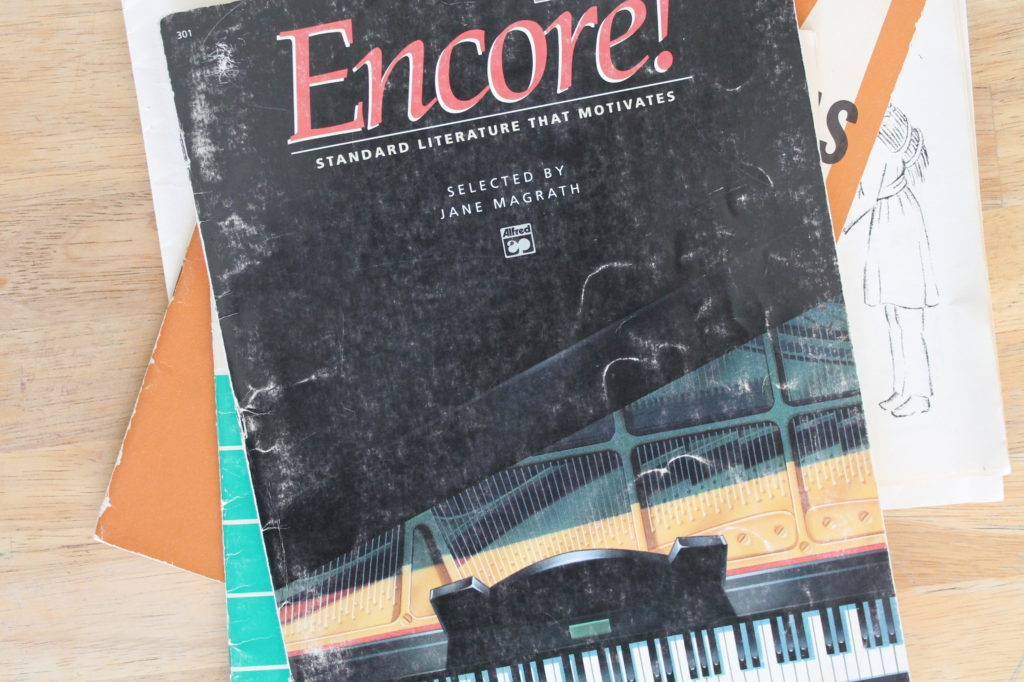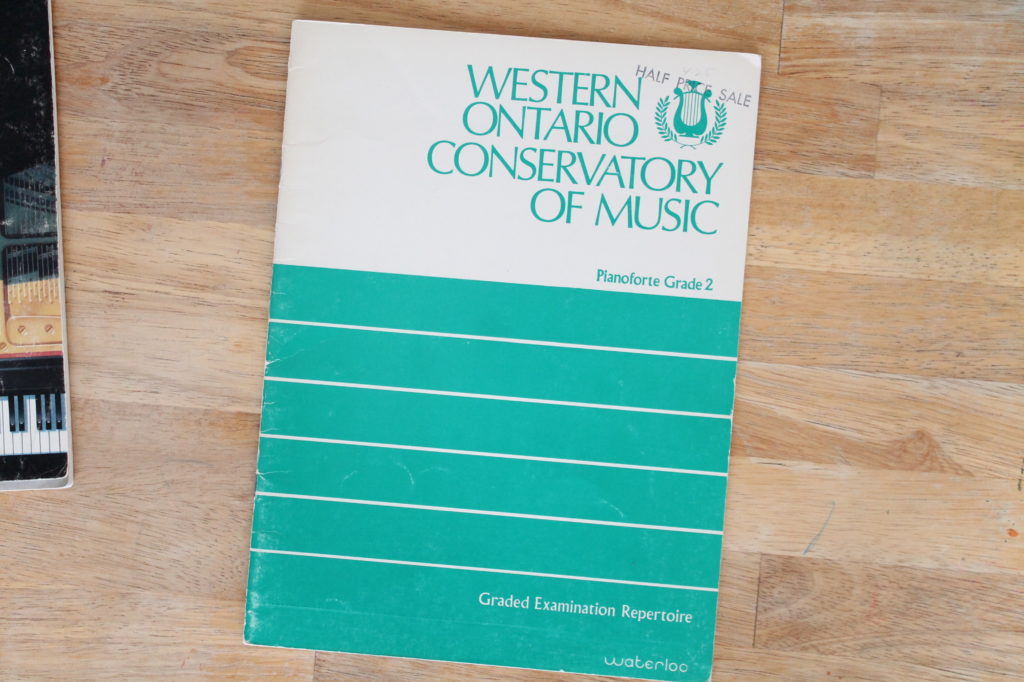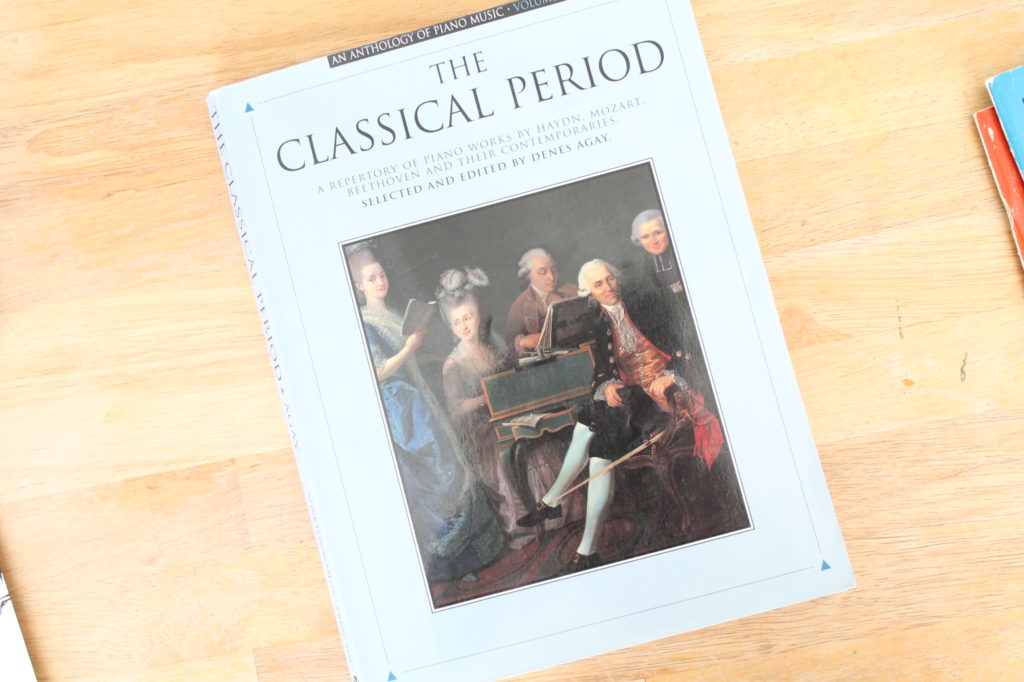Each recording used on CurwenMusic.com has been performed, recorded , and edited specifically for use with lessons. This post provides easy access to each recording along with its composer and book.
The recording below is ‘Six Ecossaises’ WoO 83 by Beethoven from the book Encore! by Jane Magrath.
The recording below is ‘Prelude in B Minor’ Op. 28 No. 6 by Chopin from the book Encore! by Jane Magrath.

The recording below is ‘Mignon’ Op. 68 No. 35 by Shumann from the book Encore! by Jane Magrath.
The recording below is Study No. 3 by Mozart from the book Western Ontario Conservatory of Music published by Waterloo Music Company. Pianoforte Grade 2.

The recording below is On the March by Harris from the book Western Ontario Conservatory of Music published by Waterloo Music Company. Pianoforte Grade 2.

The recording below is Sonatina by Felix Le Couppey from the book Select Sonatinas for Piano Solo edited by Leo Podolsky. Volume 3.
The recording below is Two German Dances 1 by Joseph Haydn from the book The Classical Period. It’s a repertory of works by Haydn, Mozart, Beethoven, and their contemporaries. It’s published by Denes Agay.

The recording below is Two German Dances 2 by Joseph Haydn from the book The Classical Period. It’s a repertory of works by Haydn, Mozart, Beethoven, and their contemporaries. It’s published by Denes Agay.
The recording below is Two Minuets by Mozart from the book The Classical Period. It’s a repertory of works by Haydn, Mozart, Beethoven, and their contemporaries. It’s published by Denes Agay.
The recording below is Sonatina II by Theodore Latour from the book Sonatinas; The First Book for Young Pianists edited by Margery Halford.
The recording below is Radetsky March by J Strauss (arranged by Allan Small.) This is from the book Teacher’s Choice by Allan Small.
The recording below is Country Dance by Beethoven (arranged by Allan Small.) This is from the book Teacher’s Choice by Allan Small.

Dear Kelli,
I decided to order a copy of Curwen, Annie Jessy (Gregg). (c2023). ‘The Teacher’s Guide (Curwen’s edition, 5017) to Mrs. Curwen’s Pianoforte Method. (The Child Pianist.) Being a Practical Course of the Elements of Music (31st ed.)’. London: J. Curwen & Sons. http://www.curwenmusic.com, because an image I managed to locate on your website seemed to me to indicate that yours is a worthy edition.
When I received the book, I found it even more worthy than I had guessed. How it was done I can only imagine, but it must be by someone that has studied well the technology of combining textual print and music notation.
Now that I have looked again at your website, I know how to proceed from here. I am just amazed at the way you have prepared the preliminary material that Annie Curwen speaks of in her Guide. It clearly follows from notions that Pestalozzi developed and others advanced.
Living in New York City I am near enough to piano and other musical resources of the New York Public Library for Performing Arts. Via Skype I have enthusiastic help from my brother in Michigan. We have several purposes in studying and practicing piano, as follow: 1. Picking up where we left off as teens; 2. Learning to encourage and teach others to do so; 3. Using the piano in the way Curwen intended and expressed in her title ‘a practical course of the elements of music’ — in other words achieving musicality, or musicianship; 4. Discovering how best to start children from infancy to develop it; and 5. Promoting the notion that parents and in loco parentis others, as well, are the first and foremost teachers, so they must learn piano themselves and practice it lifelong.
Thanks for putting all of this in our hands.
Sincerely,
George Alvarez-Bouse